Perseus with the Head of Medusa is a bronze sculpture made by Benvenuto Cellini in 1545. The sculpture stands upon on a square base with bronze relief panels depicting the story of Perseus and Andromeda, similar to a predella on an altarpiece. It is located in the Loggia dei Lanzi of the Piazza della Signoria in Florence, Italy. The second Florentine duke, Duke Cosimo I de’ Medici, commissioned the work with specific political connections to the other sculptural works in the piazza. When the piece was revealed to the public on 27 April 1554, Michelangelo’s David, Bandinelli’s Hercules and Cacus, and Donatello’s Judith and Holofernes were already erected in the piazza.
Home » Tutti i post
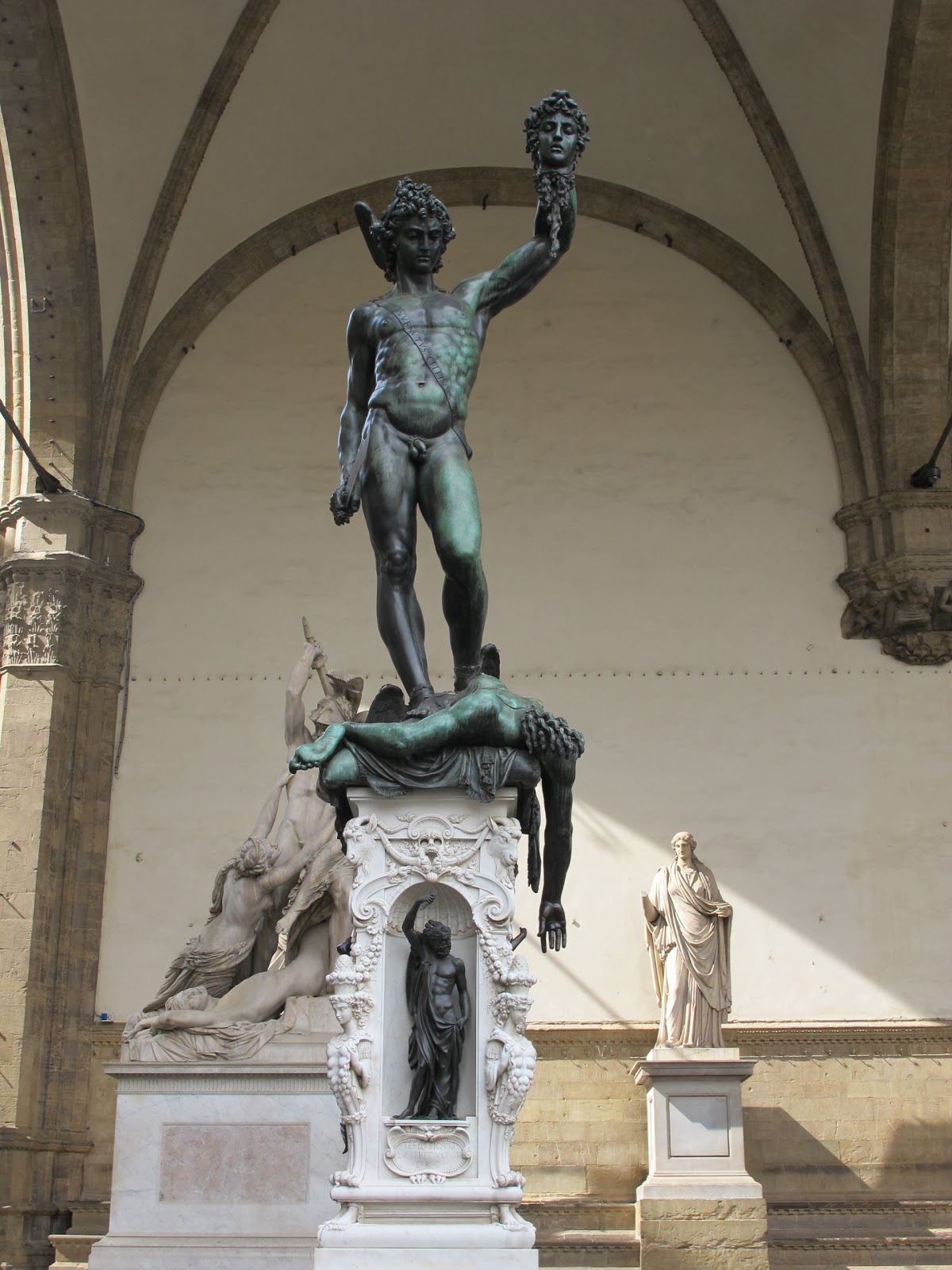
Benvenuto Cellini ~ Perseus with the Head of Medusa, 1554

Leonardo da Vinci | Comparazione della Pittura alla Scultura
Trattato della Pittura
Parte prima | Capitolo 36
La pittura è di maggior discorso mentale e di maggiore artificio e maraviglia che la scultura, conciossiaché necessità costringe la mente del pittore a trasmutarsi nella propria mente di natura, e a farsi interprete infra essa natura e l'arte, comentando con quella le cause delle sue dimostrazioni costrette dalla sua legge, ed in che modo le similitudini degli obietti circostanti all'occhio concorrano co' veri simulacri alla pupilla dell'occhio, e infra gli obietti eguali in grandezza quale si dimostrerà maggiore ad esso occhio, e infra i colori eguali qual si dimostrerà piú o meno oscuro, o piú o men chiaro; e infra le cose di eguale bassezza, quale si dimostrerà piú o men bassa; e di quelle che sono poste in altezza eguale, quale si dimostrerà piú o meno alta; e degli obietti eguali posti in varie distanze, perché si dimostreranno men noti l'un che l'altro.
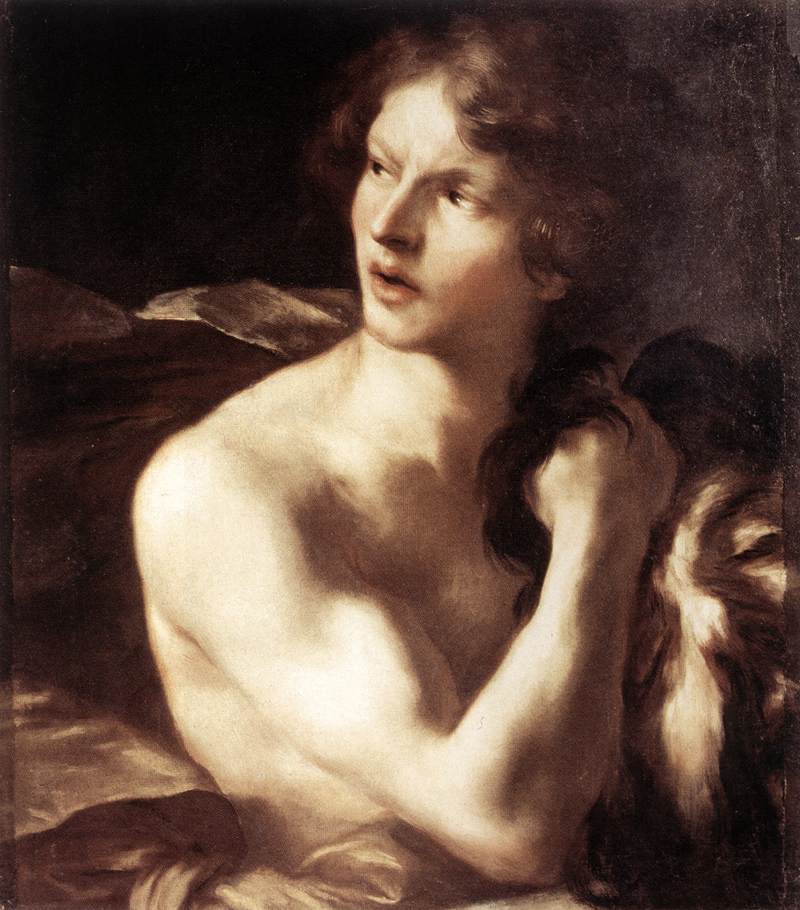
Gian Lorenzo Bernini, uomo ed artista universale
Oltre ai suoi autoritratti e ad un ritratto fattogli dal Gaulli (Roma, Gall. Corsini), il Bernini è stato descritto fisicamente e moralmente da numerosi autori: basti ricordare lo Chantelou, ed il figlio Domenico, che lo disse "aspro di natura, fisso nelle operazioni, ardente nell'ira".
Egli fu l'artista più intimamente legato al cattolicesimo risorgente nella temperie postridentina, e non può esserci dubbio sulla sua convinzione religiosa; pare che negli anni successivi al 1630 la sua fede si fosse approfondita e che nell'ultimo periodo della sua vita frequentasse assiduamente gesuiti e oratoriani: era amico intimo dei padre G. P. Oliva, gesuita, per il quale disegnò il frontespizio al secondo volume delle Prediche (1664) e ebbe come consigliere spirituale anche un suo nipote, padre Marchesi, oratoriano.
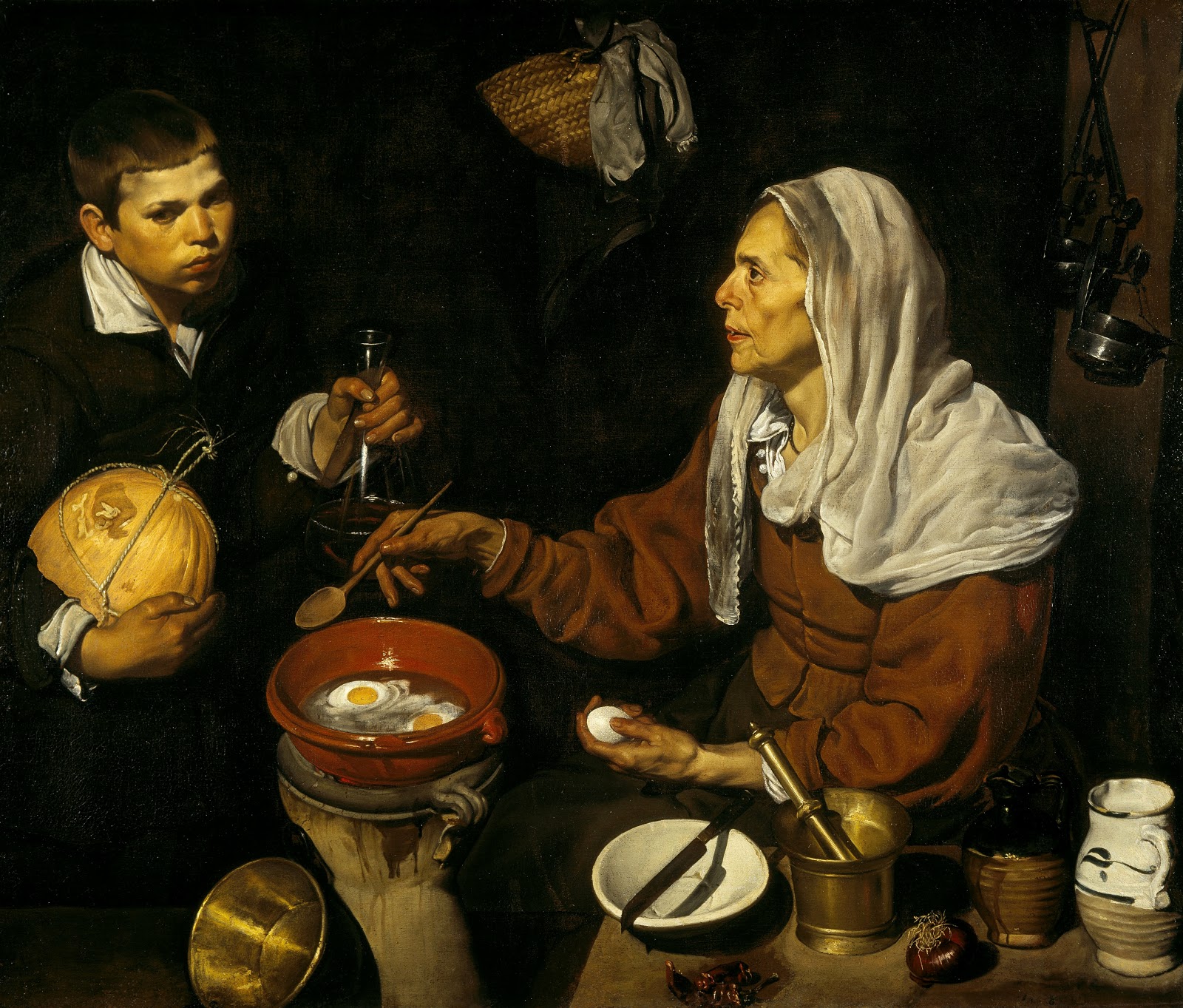
Diego Velázquez | Baroque Era painter
Diego Rodríguez de Silva y Velázquez[a] (baptized June 6, 1599 - August 6, 1660) was a Spanish painter, the leading artist in the court of King Philip IV, and one of the most important painters of the Spanish Golden Age.
He was an individualistic artist of the contemporary Baroque period.
He painted initially in a precise tenebrist style, but later developed a free manner characterized by bold brushwork that produced an illusion of form only when viewed at a suitable distance.
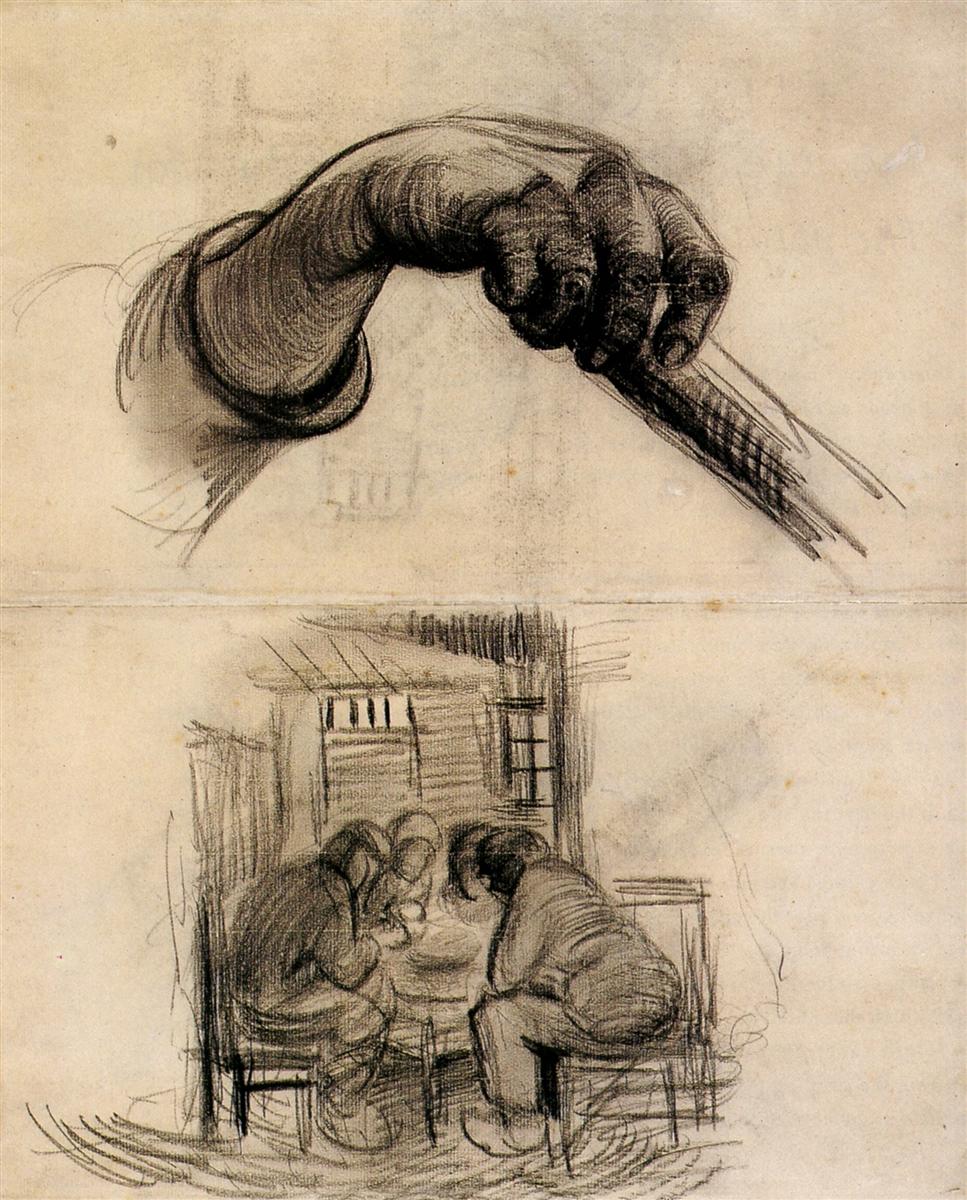
Vincent van Gogh | Study of hands
- Cos'è disegnare? Come ci si arriva? È l'atto di aprirsi un passaggio attraverso un muro di ferro invisibile che sembra trovarsi tra ciò che si sente e che si può.
- Faccio sempre ciò che non so fare per imparare come va fatto.
- L'arte è gelosa... bisogna lavorare a lungo e duramente per afferrarne l'essenza. Quello a cui miro è maledettamente difficile, eppure non penso di mirare troppo in alto.
- Soffrire senza lamentarsi è l'unica lezione da imparare in questa vita.
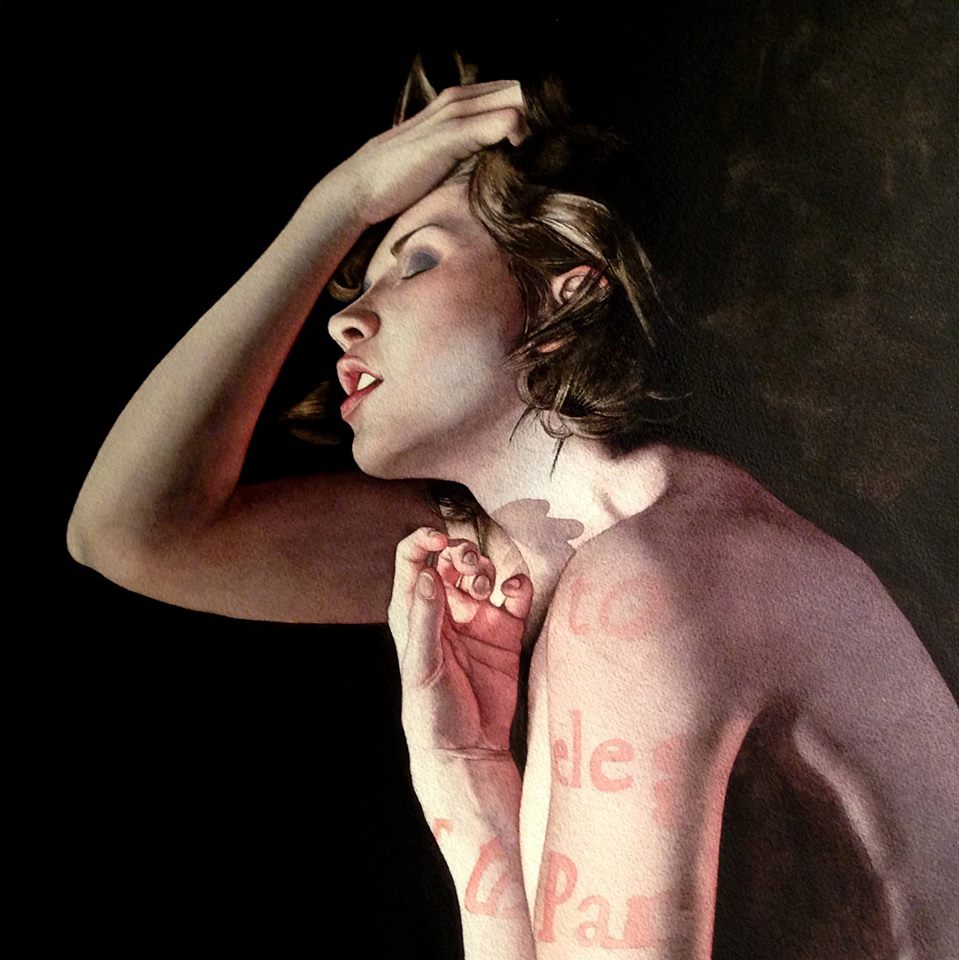
Andrew Kish, 1980 | Conceptual painter
Andrew Kish III is an award winning🎨 master Watercolor painter who is constantly pushing the boundries of contemporary watercolor. Andrew holds a BFA from Kutztown University and resides in eastern Pennsylvania.
Born in 1980 in Bethlehem Pennsylvania, Andrew M. Kish III has emerged as one of the premier watercolor painters of his generation. Kish received his B.F.A. in painting from Kutztown University. His paintings explore social subjects ranging from politics to spirituality and dive deeply into the contemporary human experience.
His unique ability to blend thought provoking concepts with powerful compositions is evolving the landscape of contemporary watercolor. Kish’s current work deals with the morality of social paradigms and challenges the viewer with rich provocative and metaphoric imagery.

Karen Hollingsworth, 1955 | WindowScape painter
Early in her career as an artist, Karen Hollingsworth painted mostly portraits and still life arrangements.
Then, around 2002, while Karen was moving furniture around her studio to set up the scene for a new still life, she placed a chair in front of a window and thought, "Now that’s a painting!"
That’s when Karen switched her focus and began mainly painting compositions of chairs and windows. From there she evolved into painting open windows with a variety of scenes beyond them.
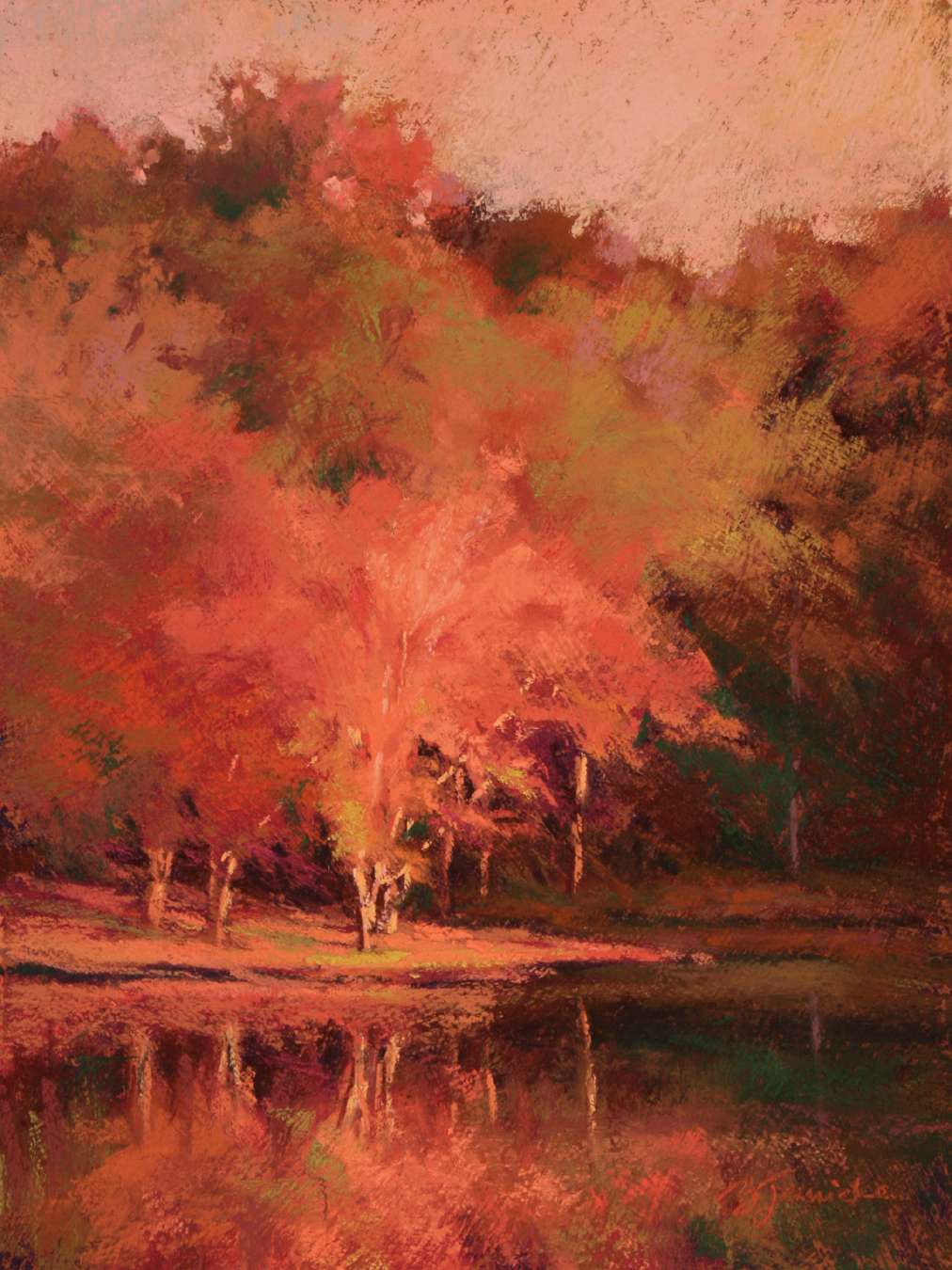
Barbara Jaenicke, 1964 | Plein Air /Still life /Pastel painter
Barbara Courtney Jaenicke (pronounced JAN-i-kee) loved to draw and paint as a teenager and decided at an early age to pursue an art career in one form or another. She received a Bachelor of Arts degree in 1986 from The College of New Jersey, taking as many fine art courses as she could, while also taking painting classes outside of her college studies. But with the desire to have a steady income right after college, she geared her education toward the commercial side and spent a little over a decade of her early career in advertising as an art director, then later shifted gears to a corporate role in marketing communications.
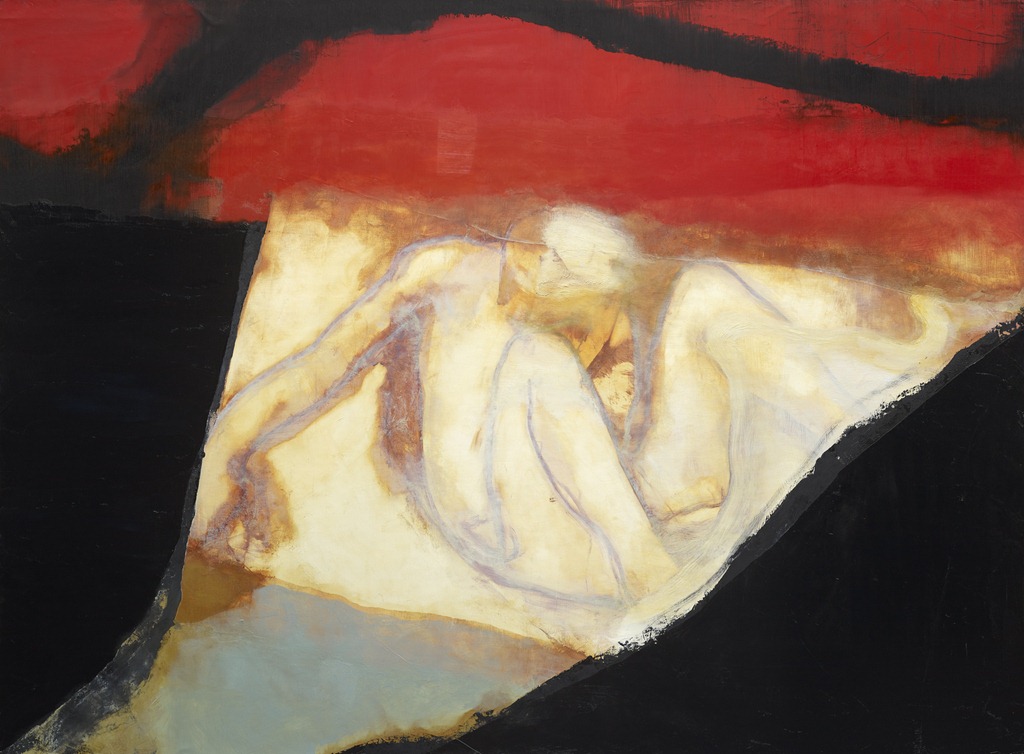
Hughie O'Donoghue RA, 1953 | Abstract Expressionism painter
© The Royal Academy of Arts /Hughie O’Donoghue RA was born in England but lived and worked for many years in County Kerry, Ireland. He graduated from Goldsmiths in 1982 and was Artist in Residence at the National Gallery, London from 1984-85.
His work is characterised by an engagement with the past. He uses figuration and abstraction to explore themes of human identity, memory and experience; and draws on history, mythology and personal records to create works which resonate with emotional intensity.

Camille Monet, Monet's Muse
Camille Doncieux (15 January 1847 - 5 September 1879) was the first wife of French painter Claude Monet. She was the subject of a number of paintings by Monet, as well as Pierre-Auguste Renoir and Édouard Manet. She was mother to two sons with Monet.
She modeled for her husband on several occasions, including for the painting Camille (The Woman in the Green Dress), which received critical acclaim at the Paris salon and earned him 800 francs when sold to Arsène Houssaye.
In addition to being Monet's favoured model, she also modelled for Pierre-Auguste Renoir and Édouard Manet.
Camille Doncieux (15 gennaio 1847 - 5 settembre 1879) fu la prima moglie del pittore francese Claude Monet. È stata oggetto di numerosi dipinti di Monet, oltre a Pierre-Auguste Renoir e Édouard Manet. Era madre di due figli con Monet.
Ha modellato per il marito in diverse occasioni, anche per la pittura Camille (La donna nel vestito verde), che ha ricevuto il plauso della critica al salone di Parigi e gli è valsa 800 franchi quando è stata venduta ad Arsène Houssaye.
Ha modellato per il marito in diverse occasioni, anche per la pittura Camille (La donna nel vestito verde), che ha ricevuto il plauso della critica al salone di Parigi e gli è valsa 800 franchi quando è stata venduta ad Arsène Houssaye.
Oltre ad essere la modella favorita di Monet, ha anche modellato per Pierre-Auguste Renoir ed Édouard Manet.

Mia Araujo, 1986 | Pop-Surrealism painter
Born and raised in Los Angeles, Argentine-American painter Mia Araujo has long been fascinated by stories and characters, and the multi-faceted complexity that makes each person unique.
Mia believes that all individuals contain an entire universe within them, which is invisible to the naked eye.
Her work concentrates on giving shape to the unseen forces within her subjects - their thoughts, memories, emotions, and complex histories. It is these qualities that fit together to form a vast, rich inner-landscape of identity and mythology for her characters.
Her work concentrates on giving shape to the unseen forces within her subjects - their thoughts, memories, emotions, and complex histories. It is these qualities that fit together to form a vast, rich inner-landscape of identity and mythology for her characters.

Eugene J. Paprocki, 1971 | Chicago painting
Eugene J. Paprocki is a Chicago born artist who has been featured in 14 one-man exhibitions in two continents. He has always dabbled in painting, even in his childhood. He formally studied Fine Art at Loyola University in Chicago.
For biographical notes -in english and italian- and other works by Paprocki see Eugene J. Paprocki, 1971 | Plein Air Impressionist painter ➦ and Eugene Paprocki, 1971 | The impressionist city ➦.
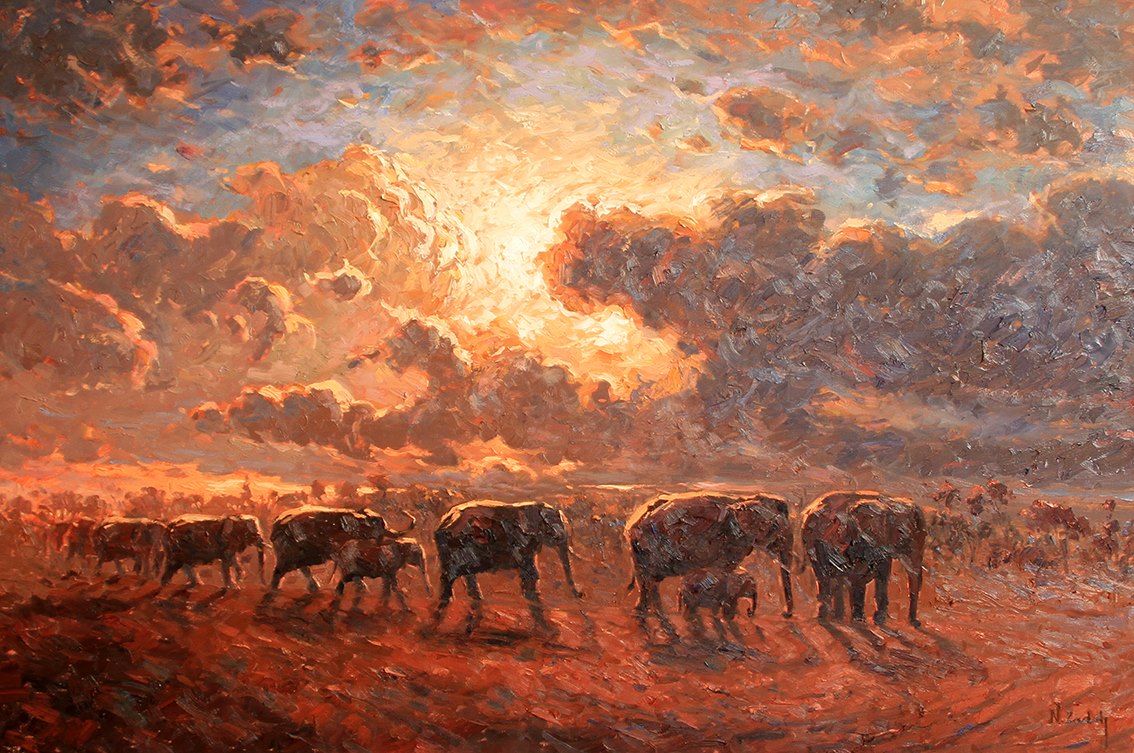
Nasser Zadeh, 1953 | Cityscape painter
Art has always been a part of Zadeh's life.
Born in 1953 in Tabriz, Iran. Nasser grew up under a variety of influences varying from carpet weaving,carpet designing to painting. At the age of 25, he decided to follow in the footsteps of his father, and decided to engage in both of these arts. He is now viewed as a master in his field as a successful Iranian artist specializing in watercolor, Oil and Acrylic paintings.
Nasser currently resides in Cape Town South Africa, where he continues his legacy expanding the use of media from watercolor to oil and acrylic.
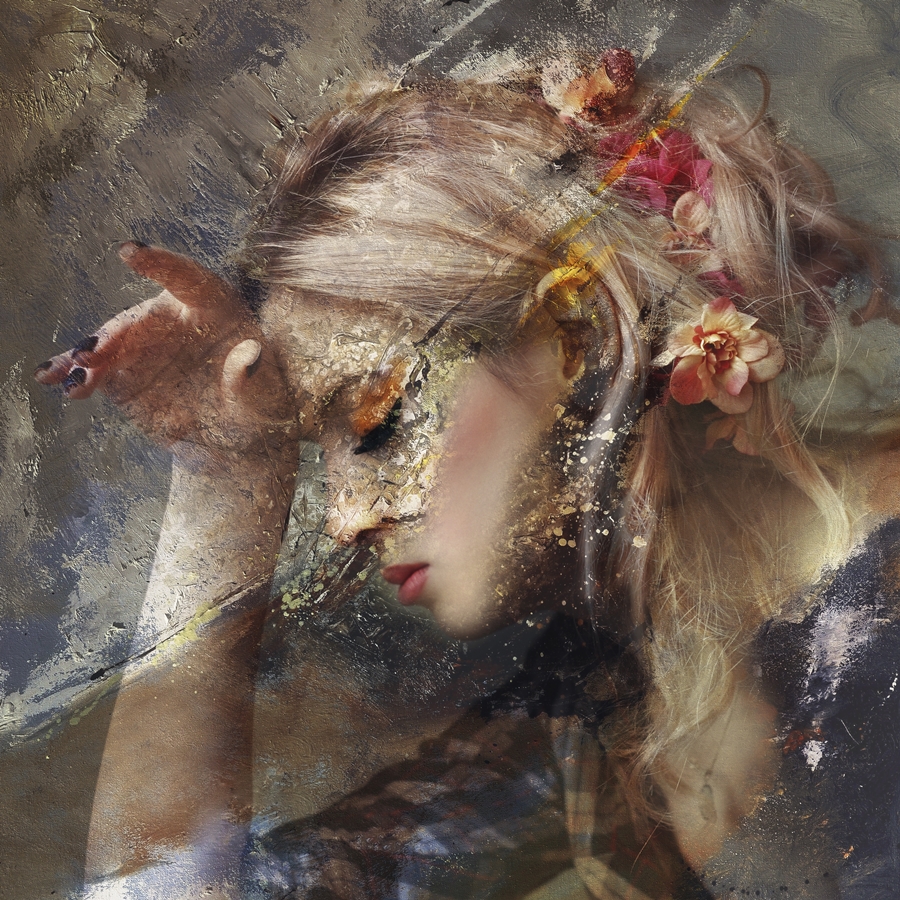
Kemal Kamil AKCA | The fire in my soul
Kemal Kamil Akca, nickname Waffle Fineart, is a fine art photographer and photo-artist living and creating in Istanbul, Turkey.

Martin Poole | Figurative painter
Martin Poole originally went to the State University of New York, Buffalo, where he majored in Fine Arts, studying printmaking.
He met the late Thomas S. Buechner through fellow artist, Tom Gardner in 1980. Poole continued to hone his emotive style under the tutelage of Buechner who stated that during his time with Poole, "A small group of people who like to paint met on Sunday mornings in nice weather to do landscapes together.
About a year later, when my studio was finished, we added a Friday night session with a model, and painted still life subjects on Sundays when weather was bad.
Marty and I have painted together almost every week through all these years.
He has become the most stimulating presence in my life as a Corning painter, and a friend whom I enjoy immensely".

Natalie Hirschman | Figurative painter
'I graduated in 1997 from Rhodes University with an honours degree in Fine art practical, Theory and philosophy of art and Anthropology.
After university I travelled extensively to Europe, South America and Asia. These 6 years of adventure allowed me to develop my plein air skills; and absorb the lessons of some of my favourite contemporary artists, and old masters. I have since pursued a full time career in oil painting. I still travel as often as possible to feed my inspiration".

Lizette Luijten-Daas, 1965 | Figurative painter
Lizette Luijten-Daas was born at Breda, Netherlands.
She studied at the Möller - institute and at Academy for Arts of Design in Tilburg. She learns a lot a gets a lot of enjoyment from teaching art in several schools and giving art courses.
She exhibits regularly in the Netherlands and Belgium. Beside her activities as an artist in her own company Artilize, she has worked since 1989 as an identikit picture drawer for the police force.
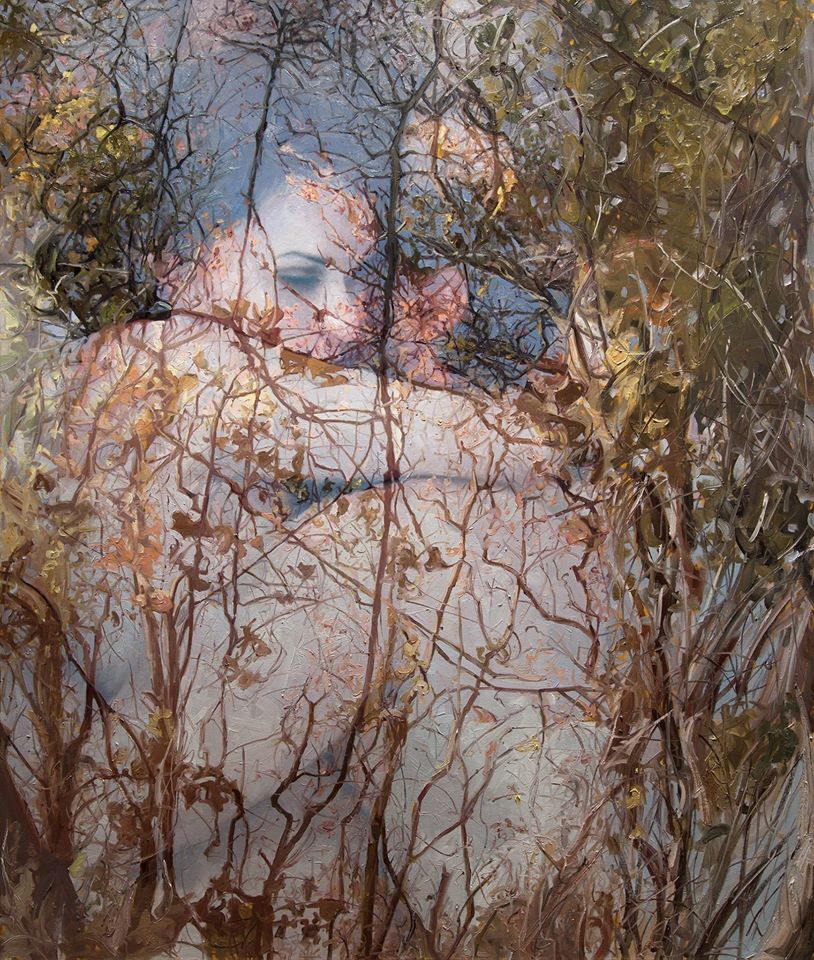
Alyssa Monks, 1977 | Pittrice astratta
Alyssa Monks è una pittrice figurativa, che offusca il confine tra astrazione e realismo.
Insegna e tiene conferenze presso università ed istituzioni a livello nazionale ed è professore a contratto presso la New York Academy of Art.
Nei primi lavori della Monks l'ambiente si fa avanti, con alcuni dei suoi dipinti che presentano interni senza figure, od interni in cui la figura è solo un piccolo elemento.

Pavel Mitkov, 1977 | Parisian dreams
Pavel Mitkov was born in Sofia, Bulgaria, to a family of young engineers. Back then, life in socialist Bulgaria was set and uniform - everybody had work; education and healthcare were free of charge; people went on vacation once a year to whatever destination they were sent to from work. Those are the artist’s earliest childhood recollections of a seemingly smooth and secure life, which, however, was lacking many other opportunities for creative outlet and recognition.
For biographical notes -in english and italian- and other works by Mitkov see Pavel Mitkov, 1977 | Impressionist /Abstract painter ➦.

Sergey Tyukanov /Сергей Тюканов, 1955 | Surrealist painter
Sergey Tyukanov was born 17 of May 1955, Poronaisk, Sakhalin Region, Russia. In 1981 he graduated Khabarovsk Teacher’s Training Institute, Artist Graphic Department - Master’s Degree. Lives and works in Kaliningrad and Chicago as a free artist.
Sergey Tyukanov draws on stories, folklore and myth from around the world. His incredible imagination inspires these unique, intriguing creations. Sergey has the steady hand of a formally-trained printmaker, and he has also brought us beautifully detailed watercolors and drawings.
Although he was born and educated in rural Russia, exhibitions in museums and galleries have taken Sergey across Europe and Asia. Atlas Galleries is proud to give Sergey his first one man show in Chicago.
He took part in more than 300 international exhibitions, has international awards, prizes, medals for his art works. He works in Chicago and St. Petersburg.

Jeff Jamison, 1958 | Impressionist Plein Air painter
Jeff Jamison is an award winning oil painter whose painting style is built on superb drawing skills in a process he calls controlled chaos. He uses no secret techniques or materials, choosing instead to paint in the traditional processes used by the Old Masters. Jeff feels that by working in this manner, using the same tools and materials as the great painters like Velazquez, Sargent and Sorolla, the only thing standing in the way of arranging those materials into truly great painting is Jeff Jamison. Along with that comes the sobering realization that one may never paint on a level of a Sargent or a Sorolla but Jeff loves the challenge and feels it is his personal responsibility to get out of bed every day and try to do just that.
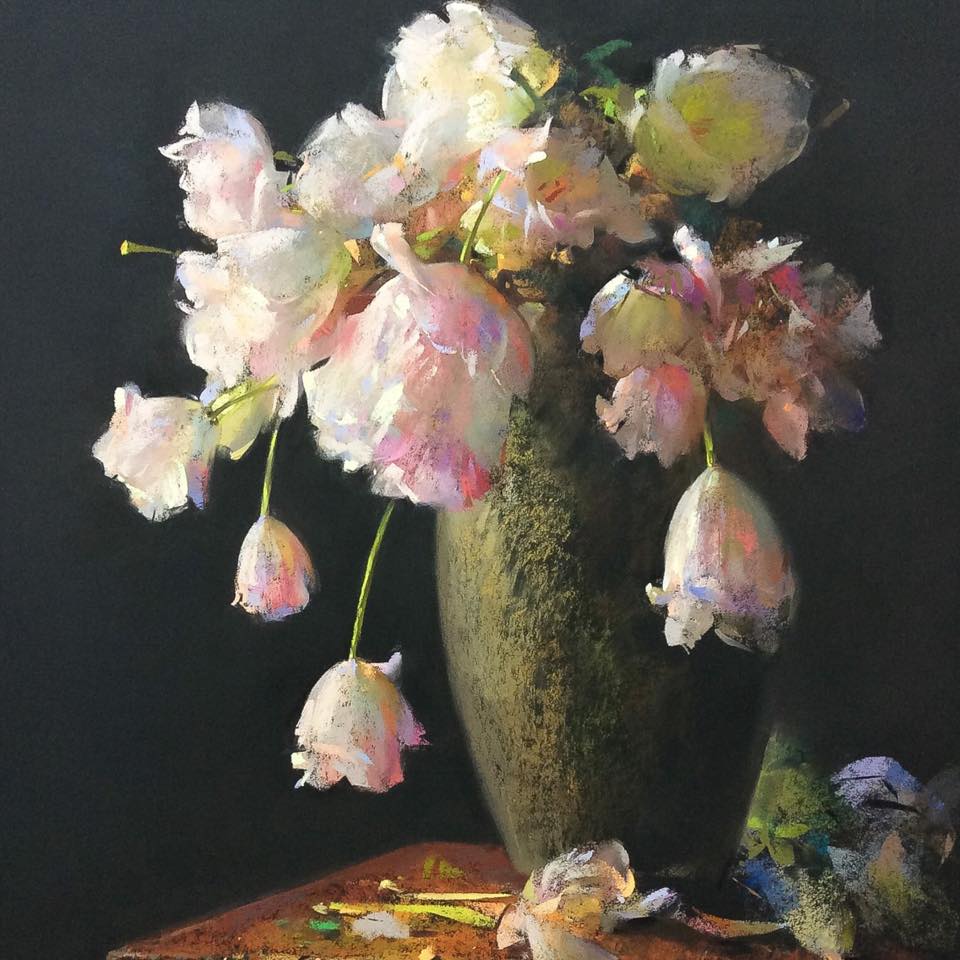
Javad Soleimanpour, 1965 | Still Life painting
The pastel painter Javad Soleimanpour is an Iranian painter born in 1965, Tebriz.
Javad Soleimanpour burst upon the pastel scene in April 2009 when he won first place in the Landscape and Interior category in that year’s Pastel 100.
For biographical notes -in english and italian- and other works by Soleimanpour see Javad Soleimanpour, 1965 | Portrait and Plein Air painting.

Javad Soleimanpour, 1965 | Portrait and Plein Air painting
Iranian painter Javad Solimanpour was born in , Tebriz. His first exhibition was in 1978 at a time when he was working on reproductions of the famous paintings in Saadabat Palace Museum. Since 1998 the Seven Art Gallery organizes his personal exhibitions in İstanbul, where Soleimanpour continues both painting and teaching at the same time.
Javad Soleimanpour burst upon the pastel scene in April 2009 when he won first place in the Landscape and Interior category in that year’s Pastel 100.

Lane Timothy, 1974 | Vintage Figurative painter
Lane Timothy is a Montana Native, who at a very young age discovered his love for art. He began working with watercolor, acrylics and pastels at the age of 7 and began selling his art at the age of 11 after discovering his passion for oil painting.
In 1993 at the age of 17 Lane was awarded the Charlie Russell National Art Scholarship, which he used to attend the University of Montana Art School and to excel in a career as a graphic designer. In 1997, after a few years at a large firm in Salt Lake City, Utah; Lane realized his true love for painting and returned to his studio to paint full time. | Waterhouse Gallery
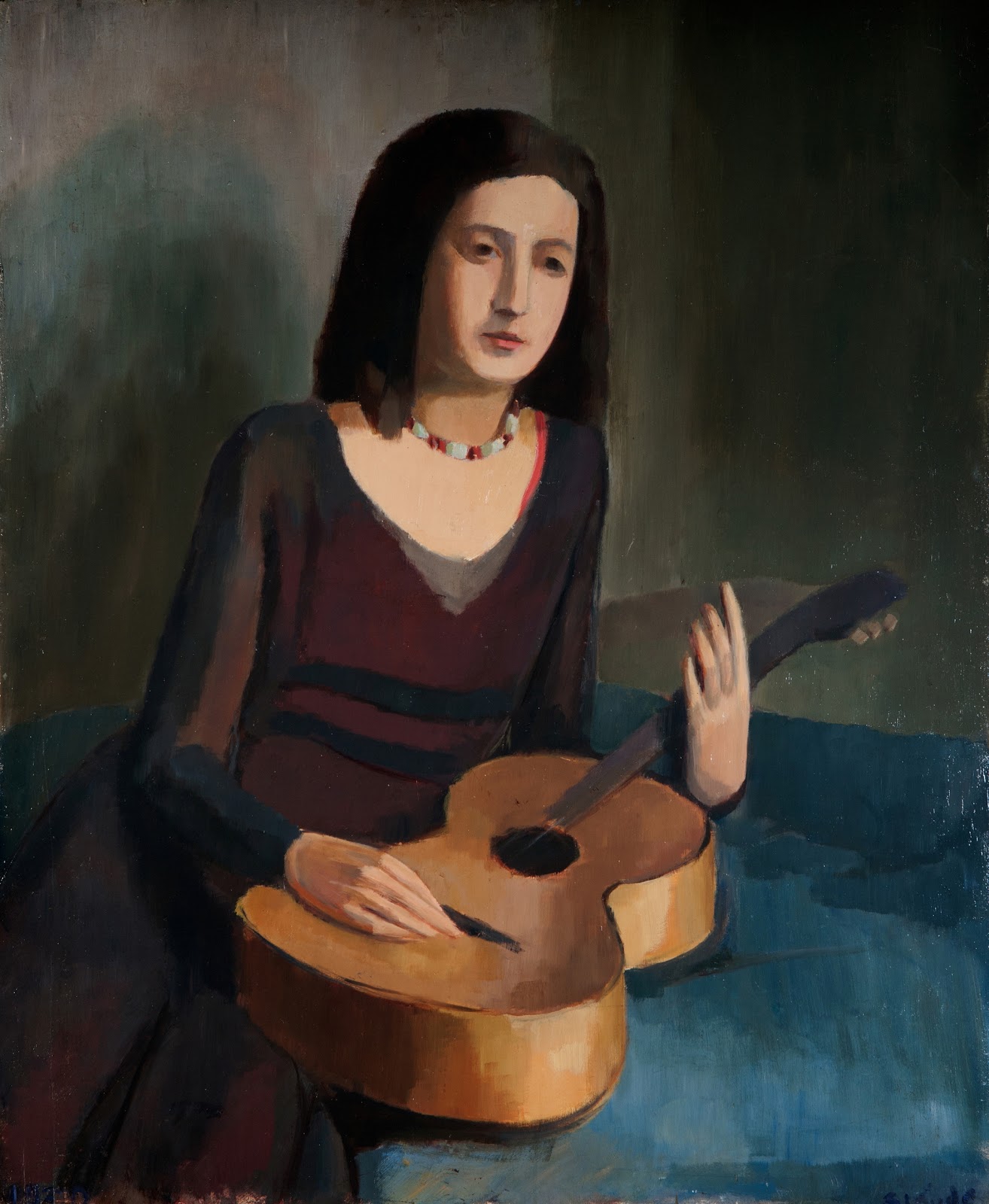
Hans-Joachim Staude | Figurative Expressionist painter
Hans-Joachim Staude (1904-1973) is one of the most interesting (and in some ways most “eccentric”) German painters of his generation.
Yet his oeuvre is still not sufficiently known, especially in Italy where he lived and worked almost his entire life in the city of Florence.
What is lacking is a more detailed critical analysis of his close relation with Italian Novecento painting, from Ardengo Soffici to Felice Carena, in the context of modern classicism in European art between the wars.
A connection that makes the artist one of the “most Italian” of 20th-century German painters.
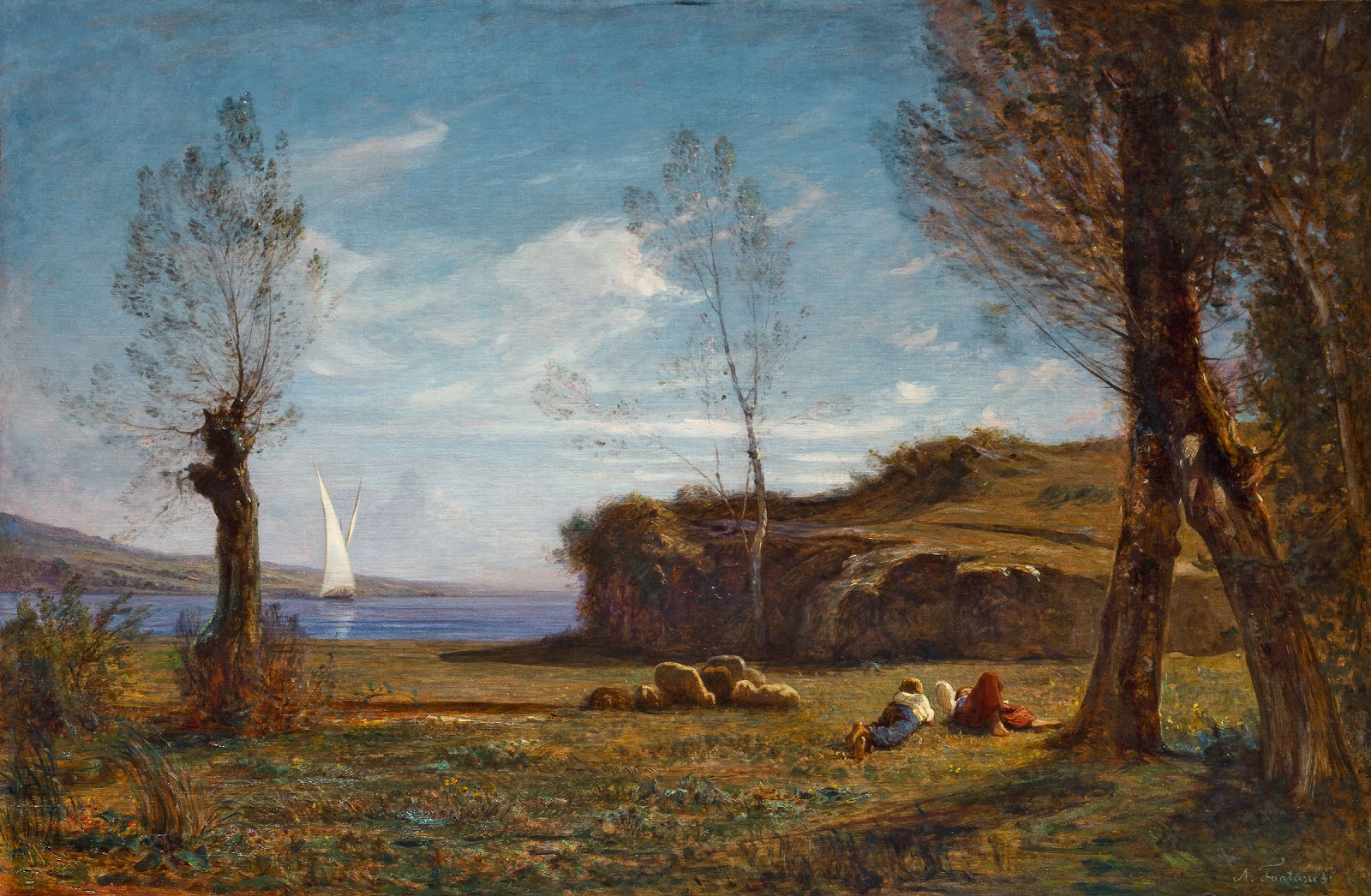
Antonio Fontanesi | Aprile (Sulle rive del lago del Bourget, in Savoia), 1864
Antonio Fontanesi (1818-1882) is considered one of the most important Italian painters of the XIX century. His landscapes influenced several Italian painters of the symbolist generation as well as the 20C Futurist Carlo Carrà.
For biographical notes -in english and italian- and other works by Fontanesi see Antonio Fontanesi | Barbizon School painter.

Antonio Fontanesi | Barbizon School painter
Antonio Fontanesi (23 February 1818 - 17 April 1882) was an Italian painter who lived in Meiji period Japan between 1876-1878. He introduced European oil painting techniques to Japan, and exerted a significant role in the development of modern Japanese yōga (Western style) painting. He is known for his works in the Romantic style of the French Barbizon school.

Camille Pissarro | Snow Effect

Paint the essential character of things.
Dipingi il carattere essenziale delle cose.

At fifty, that is in 1880, I formulated the idea of unity, without being able to render it. At sixty, I am beginning to see the possibility of rendering it.
A cinquant'anni, nel 1880, ho formulato l'idea di unità, senza essere in grado di realizzarla. A sessant'anni sto cominciando a vedere la possibilità di realizzarla.


Claude Monet | The Rouen Cathedral series, 1892-1894
The Rouen Cathedral series was painted in the 1890s by French impressionist Claude Monet. The paintings in the series each capture the façade of the cathedral at different times of the day and year, and reflect changes in its appearance under different lighting conditions.
- Date
The Rouen Cathedral paintings, more than thirty in all, were made in 1892-1893, then reworked in Monet’s studio in 1894. Monet rented spaces across the street from the cathedral, where he set up temporary studios for the purpose. In 1895, he selected what he considered to be the twenty best paintings from the series for display at his Paris dealer’s gallery, and of these he sold eight before the exhibition was over. Pissarro and Cézanne visited the exhibition and praised the series highly.
Iscriviti a:
Post (Atom)




















